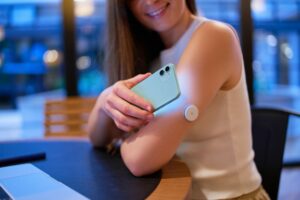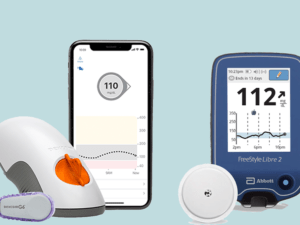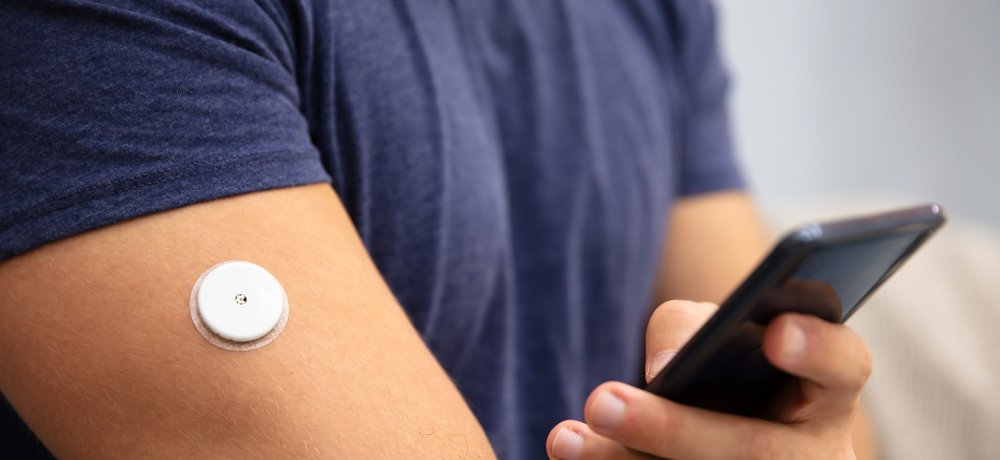If you have diabetes, then you know that it is important to keep track of your blood sugar levels. This can be difficult to do without the help of continuous glucose monitoring (CGM). CGMs are devices that help patients monitor their blood sugar levels 24 hours a day. In this blog post, we will discuss the 12 benefits of using a CGM for diabetes patients.
Contents
- 1 What Is Continuous Glucose Monitoring?
- 2 12 Benefits of Continuous Glucose Monitoring
- 2.1 Track your blood sugar levels
- 2.2 Reduce the risk of hypoglycemia
- 2.3 Make insulin dosing decisions
- 2.4 Prevent diabetic ketoacidosis
- 2.5 Detect patterns in your blood sugar levels
- 2.6 Improve your quality of life
- 2.7 Receive real-time feedback
- 2.8 Lower the cost of diabetes care
- 2.9 Monitor your progress over time
- 2.10 Make lifestyle changes
- 2.11 Reduce stress
- 2.12 Improve glycemic control
- 3 How To Use Continuous Glucose Monitoring Device?
- 4 Precautions to Take When Using a Continuous Glucose Monitor
- 5 Conclusion
What Is Continuous Glucose Monitoring?
 Continuous Glucose Monitoring is the process of measuring your blood sugar levels continuously throughout the day and night. This is done with a small sensor that is inserted under your skin, usually on your upper arm. The sensor stays in place for about two weeks before it needs to be replaced.
Continuous Glucose Monitoring is the process of measuring your blood sugar levels continuously throughout the day and night. This is done with a small sensor that is inserted under your skin, usually on your upper arm. The sensor stays in place for about two weeks before it needs to be replaced.
The sensor measures your blood sugar level every five minutes and sends the information to a transmitter that you wear on your belt or waistband. The transmitter then sends the information to a receiver that you can carry with you or wear on your wrist. The receiver displays your blood sugar levels so that you can see them at any time.
You can also download the data from the receiver to a computer so that you can track your progress over time. It is important to note that CGMs do not replace the need for blood sugar testing. They are simply a tool that can help you to better manage your diabetes.
Now that we have discussed what CGMs are, let’s take a look at the 12 benefits of using one.
12 Benefits of Continuous Glucose Monitoring
There are many benefits of using a CGM, but here are 12 of the most important ones:
Track your blood sugar levels
Continuous glucose monitoring can help you to better track your blood sugar levels. This is because you can see your blood sugar levels at any time, not just when you test them. This information can be very helpful in managing your diabetes. You will be able to see patterns in your blood sugar levels that you may not have noticed before. It’s important to know when your blood sugar is high or low so you can take the necessary steps to correct it.
Reduce the risk of hypoglycemia
 Hypoglycemia, or low blood sugar, can be very dangerous for people with diabetes. Continuous glucose monitoring can help to reduce the risk of hypoglycemia by alerting you when your blood sugar levels are getting too low. This way, you can take steps to raise your blood sugar levels before they become dangerously low. You can also avoid hypoglycemia by knowing when you need to eat or drink something to raise your blood sugar levels.
Hypoglycemia, or low blood sugar, can be very dangerous for people with diabetes. Continuous glucose monitoring can help to reduce the risk of hypoglycemia by alerting you when your blood sugar levels are getting too low. This way, you can take steps to raise your blood sugar levels before they become dangerously low. You can also avoid hypoglycemia by knowing when you need to eat or drink something to raise your blood sugar levels.
Make insulin dosing decisions
Continuous glucose monitoring can also help you to make insulin-dosing decisions. This is because you will be able to see how your blood sugar levels respond to different doses of insulin. This information can be very helpful in finding the right dose of insulin for you. This is important because too much or too little insulin can be dangerous. That is why it is important to find the right dose for you with the help of a CGM.
Prevent diabetic ketoacidosis
Ketoacidosis is a serious complication of diabetes that can occur when your blood sugar levels are too high. Continuous glucose monitoring can help to prevent ketoacidosis by alerting you when your blood sugar levels are getting too high. This way, you can take steps to lower your blood sugar levels before they become dangerously high. Diabetes ketoacidosis can be very dangerous and even life-threatening, so it is important to prevent it with the help of a CGM.
Detect patterns in your blood sugar levels
As we mentioned before, continuous glucose monitoring can help you to detect patterns in your blood sugar levels. This information can be very helpful in managing your diabetes. For example, if you notice that your blood sugar levels are always high after you eat certain foods, then you can avoid those foods or take steps to lower your blood sugar levels after eating them. It is also important to look for patterns in your blood sugar levels so that you can better manage your diabetes.
Improve your quality of life
Continuous glucose monitoring can also help to improve your quality of life. This is because it can help you to better manage your diabetes. When you have better control of your blood sugar levels, you will feel better and have more energy. You will also be less likely to experience complications from diabetes, such as heart disease, stroke, or kidney disease. When you have a CGM, you will be able to live a healthier and happier life.
Receive real-time feedback
Continuous glucose monitoring can provide you with real-time feedback about your blood sugar levels. This is because the receiver will display your blood sugar levels at all times. This information can be very helpful in managing your diabetes. You will be able to see how your blood sugar levels respond to different activities or foods and make changes accordingly. It is also important to receive real-time feedback so that you can take steps to correct your blood sugar levels if they get too high or too low.
Lower the cost of diabetes care
Continuous glucose monitoring can also help to lower the cost of diabetes care. This is because it can help you to better manage your diabetes. When you have better control of your blood sugar levels, you will be less likely to experience complications from diabetes. This can save you money on medical bills and medications. It can also save you money on things like disability insurance which can be very expensive.
Monitor your progress over time
Continuous glucose monitoring can also help you to monitor your progress over time. This is because you will be able to see how your blood sugar levels have changed over time. This information can be very helpful in managing your diabetes. You will be able to see if the changes you are making are working or not. When you have a CGM, you will be able to track your progress and make sure that you are on the right track.
Make lifestyle changes
Continuous glucose monitoring can also help you to make lifestyle changes. This is because it can help you to better manage your diabetes. When you have better control of your blood sugar levels, you will be less likely to experience complications from diabetes. This can lead to healthier choices and a healthier lifestyle. Changes in diet and exercise can be very helpful in managing diabetes. That’s why a CGM can be so valuable.
Reduce stress
Stress can have a negative impact on your blood sugar levels. Continuous glucose monitoring can help to reduce stress by providing you with real-time feedback about your blood sugar levels. This information can be very helpful in managing your diabetes. You will be able to see how your blood sugar levels respond to different activities or foods and make changes accordingly. This can help to reduce stress and improve your quality of life.
Improve glycemic control
 Continuous glucose monitoring can also help to improve glycemic control. This is because it can help you to better manage your diabetes. When you have better control of your blood sugar levels, you will be less likely to experience complications from diabetes. This can lead to better glycemic control and a healthier lifestyle. Having a CGM can help you to achieve better glycemic control and improve your quality of life.
Continuous glucose monitoring can also help to improve glycemic control. This is because it can help you to better manage your diabetes. When you have better control of your blood sugar levels, you will be less likely to experience complications from diabetes. This can lead to better glycemic control and a healthier lifestyle. Having a CGM can help you to achieve better glycemic control and improve your quality of life.
These are just a few of the many benefits of continuous glucose monitoring. If you have diabetes, talk to your doctor about whether or not continuous glucose monitoring is right for you.
How To Use Continuous Glucose Monitoring Device?
 Now that we have discussed the 12 benefits of using a CGM, let’s take a look at how to use one. First of all, you need to buy a CGM device. There are many different types of CGMs on the market, so it is important to do your research and choose the one that is right for you.
Now that we have discussed the 12 benefits of using a CGM, let’s take a look at how to use one. First of all, you need to buy a CGM device. There are many different types of CGMs on the market, so it is important to do your research and choose the one that is right for you.
Once you have chosen a CGM device, you will need to insert the sensor under your skin. The sensor stays in place for about two weeks before it needs to be replaced. You will also need to wear a transmitter, which sends the information from the sensor to the receiver. The receiver displays your blood sugar levels so that you can see them at any time.
After the sensor is inserted, you will need to calibrate it. This means that you will need to test your blood sugar levels with a finger prick and enter the results into the CGM device. Once the sensor is calibrated, it will be able to provide accurate blood sugar readings.
Once everything is set up, you will be able to monitor your blood sugar levels by following the steps below:
- Step One: Check your blood sugar levels with a finger prick.
- Step Two: Enter the results into the CGM device.
- Step Three: Check your blood sugar levels on the receiver.
- Step Four: Make any necessary insulin dosing decisions based on your blood sugar levels.
- Step Five: Repeat steps one through four as needed.
As you can see, using a CGM is a simple and easy process. However, it is important to note that CGMs do not replace the need for blood sugar testing. They are simply a tool that can help you to better manage your diabetes.
Precautions to Take When Using a Continuous Glucose Monitor
 Now that we have discussed how to use a CGM, let’s take a look at some of the precautions you should take when using one. Listed below are some things to keep in mind when using a CGM:
Now that we have discussed how to use a CGM, let’s take a look at some of the precautions you should take when using one. Listed below are some things to keep in mind when using a CGM:
- Do not rely on the CGM readings alone. You should always test your blood sugar levels with a finger prick to confirm the readings. Sometimes the CGM readings may be inaccurate. If you notice that the readings are consistently high or low, contact your healthcare team.
- Entering incorrect blood sugar values into the device can throw off the calibration. Always make sure that you are entering the correct values. This is why it is important to test your blood sugar levels with a finger prick before entering the values into the device.
- If you experience any technical difficulties with the device, contact the manufacturer for assistance. This may include problems with the sensor, transmitter, or receiver.
- CGMs are not waterproof. Do not swim or bathe while wearing the device as it may damage the device. Avoid getting the sensor site wet as this can cause irritation. If you notice any redness, swelling, or pain at the sensor site, contact your healthcare team.
- CGMs are not 100% accurate. There may be times when the readings are off. If this happens, do not panic. Simply test your blood sugar levels with a finger prick to get an accurate reading.
Continuous Glucose Monitors are a great tool for people with diabetes. They can help you to better manage your diabetes and improve your quality of life. However, it is important to remember that they are not 100% accurate and should not be relied on alone. If you have any questions about using a CGM, please contact your healthcare team.
Conclusion
In conclusion, there are many benefits to continuous glucose monitoring for diabetes patients. This technology can help patients better manage their condition and avoid complications. With the right support and education, patients can use this tool to improve their quality of life. You can learn more about continuous glucose monitoring by talking to your healthcare provider. So if you or a loved one has diabetes, don’t hesitate to ask about this life-changing technology. It could be the key to better health and a better life.
For more such information on Diabetes care, consider contacting Mantra Care. Our team of experts can help you manage your diabetes and improve your overall health with our Diabetes Control Program. You can also get in touch with their nutrition experts through our online nutrition counseling, who can guide you through the process and help you achieve your fitness goals.


